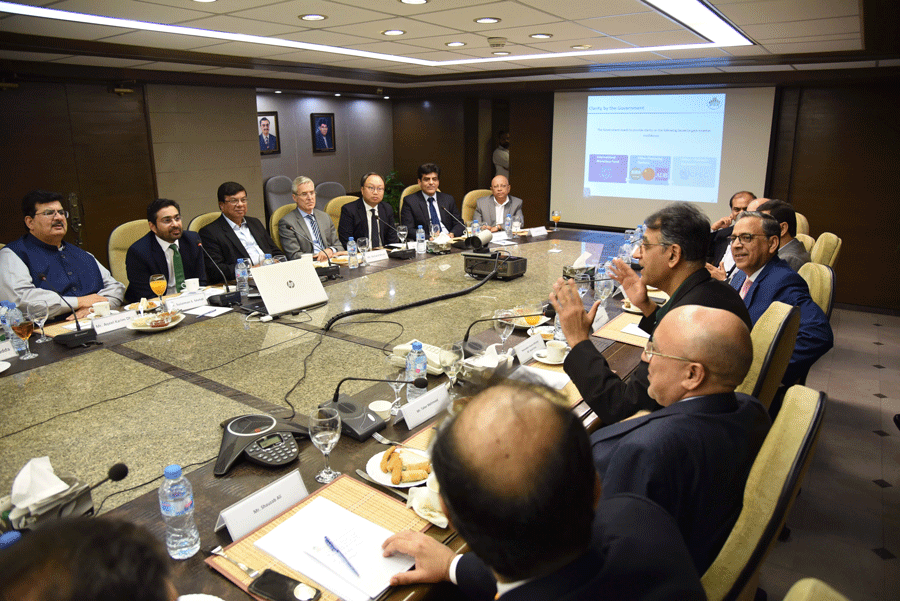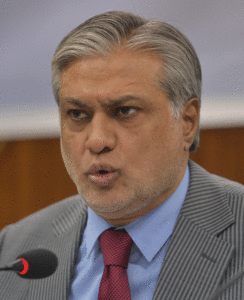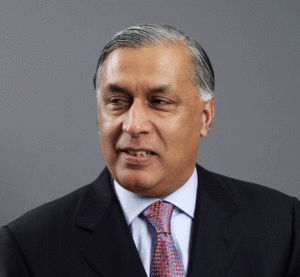The Great Economic Conundrum
By Amir Zia | Cover Story | Published 6 years ago

Prime Minister Imran Khan’s dream team remains overwhelmingly dependent on the performance of one minister to determine the success or failure of the Pakistan Tehreek-e-Insaaf (PTI) government. The corporate-guru-turned-politician, Asad Umar, carries the huge burden of expectations on his shoulders as finance minister – a not so enviable position, given Pakistan’s precarious economic condition. And yet, within the PTI there are a couple of aspirants for this very slot, and others who are working behind the scenes to install their chosen man in it.
However, this kind of politicking is par for the course within any political party. For Umar, his bigger worries stem from the myriad economic challenges faced by Pakistan, which is currently struggling to keep itself afloat on the back of loans and favours bestowed upon it by friendly countries.
Unfortunately, help from friends is not a winning economic strategy. In fact, while it can be touted as a foreign relations feat of sorts, it is no strategy at all.
When it comes to a fiscal plan, the finance minister has, in his first five months in office, by-and-large failed to impress his backers in the PTI and the people in general, or to calm the nerves of those concerned in the financial and capital markets at home and abroad.
Why is Umar – earlier viewed by many as the ‘brightest star’ in the Great Khan’s firmament – beginning to look increasingly like an under-achiever, in the most important post in the country? This question baffles many PTI supporters, well-wishers and rivals alike.
Some party insiders contend that while it is undeniable that the new government inherited an economy in shambles, the new finance minister’s lack of preparation contributes to the deepening of the crisis.
“Asad Umar was perhaps the only member of Imran Khan’s team who knew his cabinet portfolio even before the 2018 general elections,” said an honorary member of the Economic Advisory Council who requested anonymity. “Yet he walked into the office without having done proper spadework or preparation.”
An aide at the Finance Ministry (who also asked not to be named) confirmed that not only was there no structured plan for an economic revival, but that Umar did not identify or shortlist in advance the core team members for the bureaucracy and other government assignments. This included posts such as deputy chief of the planning commission, director-general debt management and those at the helm of projects like Sarmaya Pakistan.
And a member of the federal cabinet disclosed that the prime minister has, in closed quarters, also expressed to various team members his frustration over the finance minister’s lack of preparation.

The IMF’s Christine Lagarde (third right) in a meeting with Asad Umar and his team in Bali.
“Umar should know that one is only as good as his team… yet he had not done any head-hunting before-hand,” said the cabinet member. “For a project like Sarmaya Pakistan, you need at least 30 to 40 top-of-the-line professionals to run it. You have to put in place a board of governors and identify the human resource before you can go through the legal process of hiring.”
Umar, however, appears unfazed by all the criticism and attacks coming from political allies, rivals and the media. In an interview with Newsline published in this edition, he brushes aside all allegations that he is a minister without a plan and explained that his strategy of first compressing the demand and then going for the supply-side expansion – as done in his January 23 package – was working. In a trademark display of ease and poise, the finance minister laughed off the criticism that the PTI government was either confused or lacked a proper strategy. In fact, he claimed, that this was the only elected government in Pakistan’s history that had taken office with a strategy and is pushing for structural reforms.
After coming to power, while the PTI government made all the right noises on issues such as accountability and austerity measures – including auctioning vehicles and buffaloes at the Prime Minister’s House – there was no mention of any grand plan for economic stabilisation. The markets, industrialists, traders and businessmen, waited. And kept waiting. Because there were no viable solutions on offer when Umar announced his government’s first mini-budget in September 2018. Several economists, in fact, concurred that it was a non-starter.
No wonder then, that just a few months later, on January 23, Umar had to come out with a second mini-budget – this time giving some indication of the government policies as he focused on supply-side management. The second package clearly tried to revive investors’ confidence and remove irritants in doing business in Pakistan. But for critics, the package proved too little, too late.
The finance minister’s under-whelming performance notwithstanding, one cannot underestimate the kind of mega economic problems the PML-N government had left behind. It went from a monthly current account deficit of roughly $2.0 billion (which was $2.5 billion a year when Nawaz Sharif came to power in 2013), to a record trade deficit of $37.7 billion in the fiscal year 2018 on the back of falling exports and rising imports, a record public debt of Rs.24 trillion and fast depleting foreign exchange reserves.

Tapping foreign shores: Prime Minister Imran Khan and Finance Minister Asad Umar with Qatar’s Minister of State for Foreign Affairs , Sultan Saad Al-Muraikhi, in Doha.
Another leading economist, who is also a member of the Economic Advisory Council, said that perhaps Umar underestimated the scale of the challenge and “that is why he did not take action in the initial weeks.”
There can be no denying that the PTI government found itself boxed into a tight corner the moment it came to power, with no grace or honeymoon period at its disposal. The biggest job at hand was how to avert the balance-of-payment crisis, which was done by reaching out to friendly countries – Saudi Arabia, the United Arab Emirates and China. Imran Khan, who had campaigned against taking loans and aid prior to becoming prime minister, had to eat his words and humble pie, and embark on foreign trips to secure funds.
Even so, a mere outline of a viable strategy, aimed at ending the prevailing uncertainty in the markets and restoring investor confidence, might have helped. Especially in the face of an approximately 30 per cent devaluation in the Pakistani rupee and hike in interest rates – which, on January 31, were raised by another 0.25 basis points to 10.25 per cent.
Yet that was not forthcoming. The initial interactions of the finance minister with stakeholders failed to boost their confidence. “In the initial months, Umar remained aloof from the business community and did not take any input from it,” said a leading Karachi-based businessman. “Whatever few meetings some of our representatives had with him, failed to break the ice.”
The result was a big gulf between the government and the business community, which further dampened market sentiment.
In many countries, economic fundamentals have to be laid out before circumstances can take a turn for the better, but the positive sentiment of stakeholders needs to be engendered. This did not happen in the case of the PTI government.
“When Shaukat Aziz became finance minister on November 6, 1999, after General (R) Pervez Musharraf’s military coup, the economy was in worse shape than it is now,” recalled a veteran businessman. “But Shaukat Aziz gave a couple of interviews and announced a roadmap, and things started looking good.”

Asad Umar and Aqeel Dhedhi (far left) at the Pakistan Stock Exchange.
Umar has not been able to transmit any positive message to, or endear himself with, the business community, despite all his television interviews and press talks. His critics say despite being an excellent communicator, the fact remains that he has no concrete message.
Another key factor that contributed to the compounding of uncertainty was whether the government would go to the International Monetary Fund (IMF) for a bailout package or not. Lack of clarity on this front has kept markets jittery.
One group of economists maintain that taking loans from friendly countries is not enough. They contend that Pakistan should have gone to the IMF in September, or October, to initiate the stabilisation programme, because the IMF umbrella boosts investors’ confidence and makes it easy for the government to get loans from other multilateral lending agencies.
However, another set of economists remain completely opposed to the idea of going to the IMF, saying that the past programmes with this agency failed to correct the structural problems in Pakistan’s economy.
“When Ishaq Dar was finance minister, Pakistan’s adherence to the IMF diktats received a tick in every box, but resultantly, this is the economic mess we now find ourselves trapped in,” said one economist helping the Finance Ministry come up with revival plans for the economy. “The IMF stabilisation programme has not stabilised Pakistan,” he added.
For his part, Umar has maintained an ambiguous stance on the issue, saying he will go to the IMF only if it offers a ‘good programme’ – without explaining what he means by this. At the outset of his donning the mantle of finance minister, one of the problems he faced was that the Finance Ministry bureaucracy wanted to turn to the IMF immediately. The lack of consensus on this issue made negotiations with the agency a more complex game, sources say.
“The IMF, as usual, wants to apply the demand-side management strategy, which could bring stability in six months, but the government, as announced in its January 23 mini-budget, is banking on giving supply-side management strategy a chance,” said an economic observer.
The government has opted for some stabilisation measures on its own, including devaluation of currency, a hike in the interest rate, doing away with some subsidies and an increase in energy prices. This has not helped end uncertainty, because market players see more such measures on the anvil if the government strikes a deal with the IMF.

Asad Umar chairing a meeting of the Economic Coordination Committee.
And while the January 23 mini-budget is said to be ‘business-friendly,’ many would like to wait and see what the government will have to offer in the 2019-20 budget, for which preparations and consultations will be underway in February and March, respectively.
Another problem for Umar is the finance team – or the lack of one. Barring a few, most of the top guns currently in the Finance Ministry as well as the State Bank of Pakistan (SBP), are individuals chosen by the previous PMN-L government.
“How can they not take responsibility for the economic mess we are in today?” asked a leading broker at the Pakistan Stock Exchange (PSE). “How can the monetary team, for example, absolve itself from taking responsibility for the current record account deficit and public debt?” To compound the situation is the steady erosion in the quality of institutions since 2007 – thanks to the corruption and nepotism of successive governments. There is a big dearth of quality human resources in the Finance Ministry, and it is left to the consultants of international financial institutions to research and prepare papers, which in itself remain a questionable practice. This situation too is not the current government’s doing, but the legacy it has inherited from its predecessors.
So while Umar and his team struggle to improve markets and investor sentiment through fire-fighting measures, little is being done about the country’s deep-rooted structural financial  problems.
problems.
For example, the same miniscule set of tax-payers are being squeezed further, while big landowners and others have not been incorporated in the country’s tax base. The January 23 package again provided some relief to non-filers by allowing them to buy vehicles above 1300 cc and tax on the services sector remains on hold. But the provinces are in no mood to seriously tax the agriculture, property and services sectors – for obvious political reasons, including the vote-bank the feudals control and other vested interests.
The NFC award has also rendered the budget-making exercise difficult for the federal government, since 57.6 per cent of the resources have to be transferred to the provinces. The provinces do not contribute to debt repayment, while any emergency situation faced by the country is also left for the federal government to tackle, despite it being devoid of resources.
As provinces are getting big transfers from federal resources, they have no incentive to broaden their own tax base or control their expenditure. The PTI government will find its hands tied if it tries to correct the flaw in the NFC Award structure, owing to its thin majority in parliament.
 However, what the government can do is dispose of the loss-making public sector institutions, which eat up 4.0 per cent of the GDP. On this front, critics say Umar is following the ‘flawed policy’ of trying to revive these units.
However, what the government can do is dispose of the loss-making public sector institutions, which eat up 4.0 per cent of the GDP. On this front, critics say Umar is following the ‘flawed policy’ of trying to revive these units.
“It has been proven that the government cannot run commercial institutions,” said a leading broker. “Umar is pushing a failed idea. He should push for the privatisation programme which Pakistan managed successfully in the past.”
Another big crisis, which is building up fast, is on the energy front. The PTI government has, so far, failed to even mention reform in this sector, or explain the gravity of a problem that has the potential to bring Pakistan and its economy down.
“The energy sector is the biggest monster,” said an expert. “The circular debt has crossed the Rs. 1.4 trillion mark and is increasing every day. What does the government plan on doing? How will it manage this crisis? We are still in the dark after more than five months of the PTI government assuming power.”
Again, it is the PML-N government which created this monster, because of the poorly-planned and badly-executed installation of power generation plants, for which Pakistan will have to make capacity payments whether electricity is bought from these plants or not.
This is seen as the biggest and most challenging problem for the government and one that no one seems to be talking about – at least in public. So far, the only response to this from Umar and his team, has been to raise the price of natural gas and the electricity tariff. That again, is a poor strategy, as it will encourage more theft and non-payments and only squeeze those who bother paying the bills.
Overall, this means that things will get tougher for the government in the days to come, with GDP growth slowing down and inflation rising. This will hit the common man the hardest in many ways – from the loss of jobs to a reduction in purchasing power.
It will also hit Imran Khan’s dream of creating 10 million new jobs and building five million low-cost houses. And Umar is the man who will have to bear the brunt of his actions as well as those of his colleagues in the government.
Amir Zia is a senior Pakistani journalist, currently working as the Chief Editor of HUM News. He has worked for leading media organisations, including Reuters, AP, Gulf News, The News, Samaa TV and Newsline.


